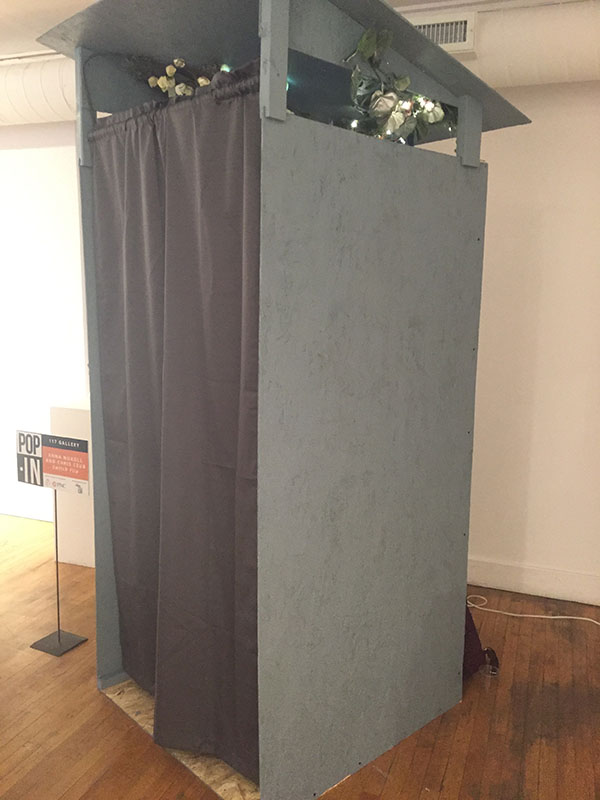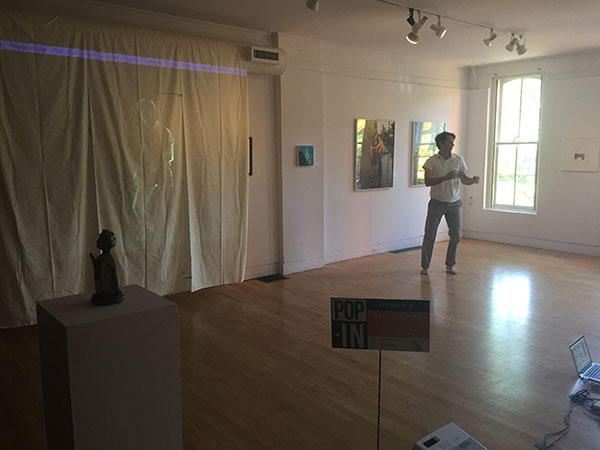North Washington Street Porch Shows

In a town as rich in creative energy as Ypsilanti, musical performances can happen pretty much anywhere, and the Washington Street porch shows are proof. The spacious porch of 201 N. Washington Street in Ypsi has become the perfect DIY venue for local musical talent and casual community gatherings, put together almost entirely by Washington Street resident J.T. Garfield.
The magic of these shows comes from their completely laid-back, free-form atmosphere. Usually artists perform from the porch while the audience relaxes on folding chairs or plunks down right on the lawn. And if the musician doesn’t feel like playing up on the porch, well, he or she might just sit in the grass too and play from there. During one rainy Sunday show, Washington Street residents threw together a covering that was part zip-tie, part tarp-fort, part tent to cover the entire porch and the audience. Even the line-up is changeable, with some improvisational music acts jumping up on stage as the spirit moves them.
While the shows’ schedules are often packed with local musicians, there is always an effort to keep things interesting by including comedians, dancers, spoken word artists, and other diverse types of performance art. Past acts include Matt Jones, Misty Lyn, Fred Thomas, and J.T. himself, who belongs to the band Truman.
There’s no real schedule for these shows, but that’s no surprise when everything about this event speaks to its easygoing, yard-barbecue atmosphere. As of now, there’s only one future porch show with a date, on September 4th, so if you happen to be just cruising down Washington around 6pm and in the mood for music, it’ll be your lucky day.
For an excellent interview with J.T. Garfield on the origins and vision of the porch shows, check out this article from Ypsi Real by Michael Moriarty.
The next Washington Street porch show will be on September 4th at 6pm outside 201 N. Washington St. This free event is open to the public.
Fabulous Fiction Firsts #609

“Friendship improves happiness, and abates misery, by doubling our joys, and dividing our grief.”
-Marcus Tullius Cicero
Shutting out the world beyond her Paris apartment for a whole year after the accidental deaths of her husband and young daughter, leaving management of her literary cafe Happy People Read & Drink Coffee in the hands of her well-meaning-but-not-so-capable partner Felix, Diane is finally ready to join the world of the living. Out of the blue, she announces that she will be moving to Ireland, the one place her late husband had wanted to visit.
Renting an isolated cottage in Mulranny along the wind-swept Irish coast, Diane makes tentative steps towards rebuilding her life, aided by endless cigarettes, music, copious amount of wine, friendly villagers and Postman Pat, a canine who takes an immediate liking to her. The exception being Postman Pat's owner, her neighbor - the rude and abrasive photographer, Edward, who is battling his own demons. I don't have to tell you what is likely to happen....
Agnès Martin-Lugand's debut, already an international bestseller, confronts life's most nightmarish tragedy with an unblinking examination. "For readers of women’s journeys and tales of hope, this slim volume engages thoughts and feelings without whitewashing grief." -Booklist
In development as a Weinstein Company feature film, sequel anticipated.

Journalist and translator Milena Busquets's debut This Too Shall Pass* is a lively, sexy, honest, and moving novel about a woman coming to terms with grief.
Forty year-old Blanca is wrecked with grief, losing her mother - the most important person in her life. Unable to carry on in Barcelona, she returns to her mother’s former home in Cadaqués with, among others, 2 sons, 2 ex-husbands, 2 best friends, and looking forward to meeting up with her married lover.
Surrounded by those she loves most, she spends the summer in an impossibly beautiful place, finding ways to reconnect and understand what it means to truly live on her own terms, just as her mother would have wanted.
"Witty and playful in tone as well as poignant and reflective, Busquets’ novel is drawn in part from the loss of her own mother, Esther Busquets, a prominent publishing figure in Spain. The seductions of its setting add to its appeal for American readers." -Booklist
Film rights to Buenos Aires based producer Daniel Burman.
* = starred review
Preview: McKee Brothers Keyed In On Personal Brand Of Blues & Jazz

Sibling rivalries in pop music are few and far between, but in other forms they are quite frequent and stand the test of time for being viable, much more friendly, and cooperative.
The McKee Brothers -- Ralph and Denis McKee -- make time as best they can, even though Ralph lives in Ann Arbor and Denis resides in Lakewood, California. They’ve been working on a collective project for fifteen years, resulting in the newly released CD Enjoy It While You Can, a recording featuring cream-of-the-crop players from Southeastern-to-Mid Michigan, Metro Detroit, and the West Coast.
In the 1970s, the self-taught Ralph McKee started playing professionally after being inspired by his college roommate Bob Doezema, a musician who went on tour and collaborated with Blood, Sweat & Tears keyboardist and producer Al Kooper. Doezema moved on, teaching at the famed Berklee School of Music in Boston.
Primarily an electric bass guitarist, although also an adept percussionist, lap/steel guitarist, and fond of the mbira/kalimba/thumb piano, Ralph McKee studied in the early 1980s at the University of Michigan and became a prominent attorney while also pursuing his interest in tennis as a player. (He is current President of the Ann Arbor Area Community Tennis Association, administers the annual Ann Arbor City Tennis Tournament.)
Denis McKee, eleven years Ralph’s junior, took up bongo drums at the behest of one of Ralph’s collaborators, Pat “Doc” Roberts. Denis also picked up acoustic and electric guitar, eventually keyboards, and the alto saxophone in school bands.
While living in Lansing, Denis met, and performed in Jackson with, the legendary Bob Schultz -- vocalist, saxophonist, and keyboardist whose credits include Bob Seger and his own group Big Foot Bob & The Toe Tappers. Ralph also played gigs with Schultz, as well as local fusion groups All Directions, Big Fun (not the recent group featuring Mark Kirschenmann), Continuum, the reggae band The Pulsations, The Bridge Club, a reunion version of SRC with the late guitarist Gary Quackenbush, the Blue Rays, Lady Sunshine & The X Band, vocalist/guitarist Peter Holland, vocalist Marsha Gayle, and recently the R & B group The Avery Goode Band, as well as the prominent alt country band Hoodang.
Denis moved to L.A. in the 1990s, but prior to heading west was taught by and collaborated with the late guitarist Jerry Glassel and sat in occasionally with Continuum prior to leaving Michigan. In California, Denis was music director for R & B icon King Floyd, former Michigan jazz and blues singer Barbara Morrison, and famed guitarist Kirk Fletcher, who appears on the CD. As patrons, the McKee Brothers have attended the Doheny Blues Festival for several years running, providing further inspiration to record the music on Enjoy It While You Can.
In a recent interview, Ralph McKee reflected on what basically brought him and his brother together musically. “He was a kid when I started playing professionally. We never really played together professionally except for the few Continuum shows. We do listen to and like a lot of the same stuff - The Police, Santana, David Sanborn, Frank Zappa, Robin Trower.”
Fact is, their musical palates are much broader, including many forms of jazz, gospel and ethnic vocal music, African and Hawaiian vocals or rhythms, contemporary Twentieth and Twenty First Century musics, and more.
The McKee’s also produced a Latin-jazz session in 2001 with members of Los Gatos. This recording got the ball rolling on a legitimate McKee Brothers project. Some of this new music will be included during the CD release performance and may be produced into a follow-up CD titled, Enjoy It Some More.
“For this show we’ll just do everything on the album,” Ralph McKee emphasized. The show is 90 minutes and the CD is almost 80 minutes long. We might have time for extras.” He hinted about features for Schultz, or Tasha Owens, a local singer for whom he has considerable regard.
While influenced primarily by the blues, the McKee Brothers present a style of music that is reminiscent of the Memphis-flavored horn driven style of funk quite similar to that of the legendary Stax Records catalogue. The key is that it goes beyond that sweet soul sound, punctuated by the distinctive vocals of Schultz, a driving rhythm section, tinges of Philadelphia, New Orleans, the Caribbean, and of course the Motown sound they grew up with.
Michael G. Nastos is known as a veteran radio broadcaster, local music journalist, and event promoter/producer. He is a former music director and current super sub on 88.3 WCBN-FM Ann Arbor, founding member of SEMJA, the Southeastern Michigan Jazz Association, Board of Directors member of the Michigan Jazz Festival, votes in the annual Detroit Music Awards and Down Beat Magazine, NPR Music and El Intruso Critics Polls, and writes monthly for Hot House Magazine in New York City.
The McKee Brothers perform at 5:30 pm, Friday, August 19, at The Necto Nightclub, 516 E. Liberty. With Ralph and Denis Mc Kee will be keyboardist Jim Alfredson, guitarist Stan Budzynski, trumpeter Brandon Cooper, saxophonist Dave Huber, keyboardist Duncan McMillan, vocalist Tasha Owens, vocalist Bob Schultz, saxophonist Bobby Streng, drummer Skeeto Valdez and special guests to be announced. For more information, call The Necto at (734) 994-5436 or email info@necto.com.
Fabulous Fiction Firsts #608
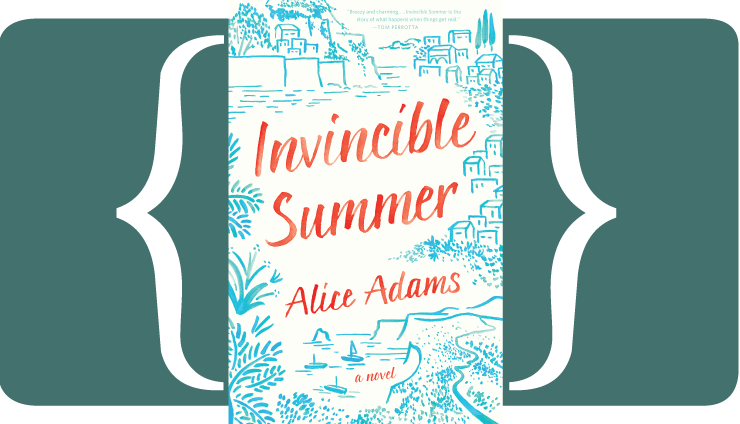
“In the depth of winter, I finally learned that within me there lay an invincible summer. And that makes me happy.” -Albert Camus
Invincible Summer by Alice Adams is "a dazzling depiction of the highs and lows of adulthood, ... a story about finding the courage to carry on in the wake of disappointment, and a powerful testament to love and friendship as the constants in an ever-changing world." (Kirkus Reviews)
Eva, Benedict, and siblings Sylvie and Lucien were inseparable throughout college. Upon graduation Eva, hopelessly in love with playboy Lucien breaks away to scale the peak of global finance, and finds herself lonely in her London loft. Artistic Sylvie and carefree Lucien travel the world, looking for adventure and good times. Only Benedict stays behind, pursuing a PhD in Physics, and pining over Eva.
Over the course of 2 decades, these friends would meet up, determined to remain close while circumstances, geography, and life choices strain their relationships until tragedies draw them together again, but in ways they never could have imaged.
"Adams has crafted a light, charming tale of love, loss, and the lasting power of friendship... the characters are engaging and one cannot help but care about them. All in all, a perfect summer read." (Booklist) For fans of Meg Wolitzer's The Interestings and Lucky Us by Amy Bloom.

Chronicle of a Last Summer: a novel of Egypt by Yasmine El Rashidi traces a young Egyptian woman's coming of age through three pivotal summers, from the oppressive Mubarak era to the turbulent Arab Spring.
Cairo, 1984. the 6 year-old unnamed narrator, observant and wildly imaginative, spends the hot summer days away from her English school listening to her mother’s phone conversations, watching the three state-sanctioned TV stations with the volume off, and wondering about her father's absence - why, or to where, no one will say.
In 1998, the narrator, now a university student and an aspiring filmmaker, yearns for change but is deeply fearful of terrorism and the repression that surrounds her. Finally, as a writer in 2104, after reunited with her father, she is acutely aware of how difficult it is to affect any real change, and wonders about the silences that have marked and shaped her generation.
Yasmine El Rashidi covers Egypt and the Middle East for the The New York Review of Books, The Guardian, The New York Times, and The Wall Street Journal. She splits her time between New York City and Cairo.
Review: "Catherine Opie: 700 Nimes Road," University of Michigan Museum of Art
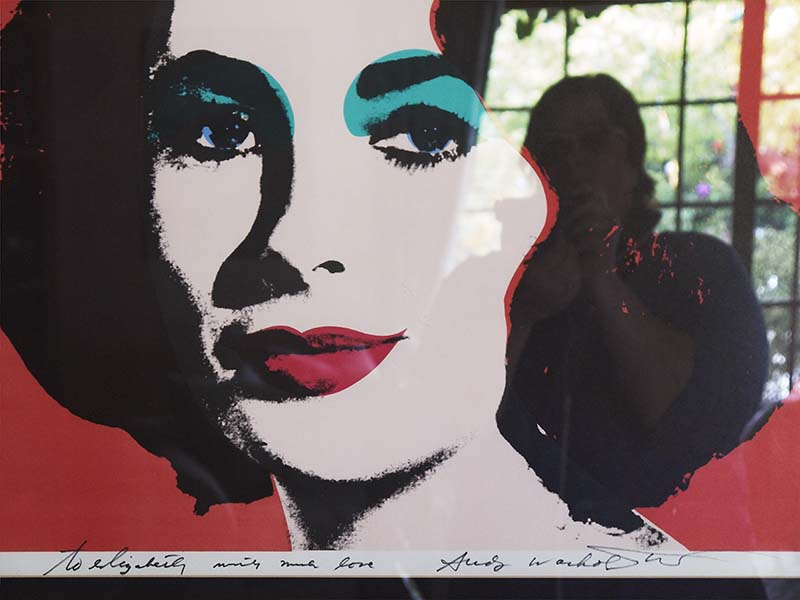
The University of Michigan Museum of Art’s Catherine Opie: 700 Nimes Road is a star-studded two-for-one visual art spectacular. 50 photographs culled from over 3,000 taken in 2010-11 by Los Angeles-based photographer Catherine Opie at the residence of actress Elizabeth Taylor, the exhibit illustrates the six months this famed contemporary photographer spent taking photos at Taylor’s Bel Air residence through the coincidental period of Taylor’s death.
Drawn from two Opie photographic series—Closets and Jewels and 700 Nimes Road—where Opie had unlimited access to Taylor’s home, the display is organized by L.A.’s Museum of Contemporary Art with lead support provided by J.P. Morgan Private Bank; philanthropists Jamie McCourt and Gilena Simons, with UMMA support provided by the U-M Health System; Bank of America; Merrill Lynch; philanthropists Alan Hergott and Curt Shepard, with additional support provided by the U-M Departments of the History of Art; Screen Arts and Cultures; and American Culture.
As we all well know, Elizabeth Taylor had a way of galvanizing attention. And the range of these supporting groups indicates how galvanizing she rightly could be. For Catherine Opie: 700 Nimes Road is as fascinating a keyhole as we could imagine of this world-famous woman’s life.

Opie herself is quite the celebrity. An award-winning photographer (and professor of photography at the University of California at Los Angeles) who works in the intersection of portraiture, landscape, and studio photography, Opie specializes in crafting transgressive imagery that knowingly blurs the intersection of private and public spaces. Mingling her expertise in a variety of photographic and printing technologies with social and political commentary, Opie has consistently produced photographs that document the shadows of our society.
By contrast, these 700 Nimes Road photographs are about as above the photojournalistic fold as Opie’s art gets. Inspired by southern photographer William Egglston’s 1984 photographs of Elvis Presley’s Graceland mansion, she and Taylor shared business manager Derrick Lee, and after negotiating with Taylor’s longtime executive assistant Tim Mendelson, Opie was given full access to 700 Nimes Road. She was busily peering in and around the corners of Taylor’s residence when the actress died of congestive heart failure on March 23, 2011
It’s this dramatic turn of events that makes 700 Nimes Road a masterful display of unceasingly studied and provocative photography. For it’s indeed a perfect melding of professional fine arts photography and screen diva as Opie never actually met Taylor in person through the course of her photographic work.
Thus what’s most fascinating about this non-meeting is the Elizabeth Taylor that Opie illustrates—and not the Elizabeth Taylor she might have met. After all, by the time of this assignment, Taylor had gone through umpteenth career cycles as a screen star ranging from guileless ingénue to international screen icon to television guest star. For Taylor shined bright at each turn of her lengthy career: Winner of two Academy Awards for Butterfield 8 (1960) and Who’s Afraid of Virginia Woolf? (1966), Taylor closed her acting career with a minor role in 1994’s The Flintstones for which she was nominated as Worst Supporting Actress by the Golden Raspberry Awards.

Yet this was also hardly the extent of Taylor’s lifework. She was an astoundingly successful businesswoman who launched her own best-selling fragrances Passion in 1987 and White Diamonds in 1991 that led to an estimated $600 million to one billion dollar personal wealth. After her death, her estate was dispersed by Christie’s auction house for a then record-breaking $156.8 million dollars with an additional $5.5 million dollars for her clothing and accessories. And her final career turn was an equally winning philanthropist for HIV/AID activism culminating with a Presidential Citizens Medal in 2001.
That’s a lot acclaim for one lifetime. So perhaps the most remarkable aspect of Opie’s art photography is her uncanny condensation of each of these many Elizabeth Taylors with visual references to her many loves—seven husbands; with countless friendships—through the sheer effect of being Elizabeth Taylor.
We certainly learn more about what it meant to be Elizabeth Taylor through Opie’s photos than through the proverbial thousand words. In some photos, Taylor’s pets make their appearance rummaging about her personal items. Other photographs feature personal Taylor keepsakes (including one photo of the box holding ex-husband Richard Burton’s 1972 gift of the famed Taj Mahal diamond necklace on her 40th birthday), with other photos featuring her raft of celebrity friends in informal guise. Yet other photographs give us extraordinary visual details of Taylor’s personal routine ranging from a massive number of orderly stashed handbags in one closet to an astounding number of awards in her “trophy room” to a single holiday ornament floating in midair.

Still, fine art will stand out in fine art photography exhibits. And a single signature Opie photograph of Taylor in the abstract as reflected through the visage of her celebrity makes 2010-11’s Elizabeth (Self-Portrait, Artist) archival pigment print a first among equals in this intriguing exhibit.
The bouncing signifiers in this photograph alone make it a superior artwork. For the photo features Opie photographing herself off a bounced image of Andy Warhol’s famed 1966 silkscreen Liz #6 [Early Colored Liz].
In a career unceasingly devoted to celebrity, Warhol’s Liz #6 [Early Colored Liz] is one of his most recognizable portraits. The silkscreen features a desaturated Taylor with a sharp near-monochromatic contrast with the exception of eggshell blue eye shadow and an equally strategic contrast between his framing red background and the actress’ signature brushy bouffant brunette hair. Inferring her beauty as much as painting it, Warhol creates an idealized, romanticized image of Elizabeth Taylor that represents her public image at the height of her glory.
Opie, on the other hand, is the blurred background image to the side of Taylor in Elizabeth (Self-Portrait, Artist). Crafting a superior art photo that bounces herself sideways off the print’s framing glass, Opie links Warhol, herself, and her subject’s idealized portrait in a single image that celebrates Taylor mystique as well as her own personal property autographed by Warhol with the phrase “with much love.”
In a single masterly image, Opie shows us how this actress held—and continues to hold—such strong affect on our emotions to this day. Opie’s Elizabeth (Self-Portrait, Artist) self-reflexively recalls Liz #6 [Early Colored Liz] today with as much love as Taylor was able to engender then.
John Carlos Cantú has written on our community's visual arts in a number of different periodicals.
University of Michigan Museum of Art: “Catherine Opie: 700 Nimes Road” will run through September 11, 2016. The UMMA is located at 525 S. State Street. The Museum is open Tuesday-Saturday 11 a.m.–5 p.m.; and Sunday 12–5 p.m. For information, call 734-764.0395.
Review: Intermitten – Technology and Arts Conference

Creativity and passion hit the Ark stage last Friday and Saturday and impressed the value of hard work and following your dreams upon the completely engaged and enthusiastic attendees of the first ever (and soon to be annual – please!) Intermitten Technology and Arts Conference. The primary goal, as stated in their press release, was “to explore ways in which creativity has an ever-expanding role in our increasingly-connected world.” And they totally hit it out of the ballpark with a diverse and impressive mix of artists, musicians, filmmakers, startup founders, and techies of all sorts who came together to inspire us all to change the world with creativity, perseverance, and a little bit of business knowledge shared from those who went down that path before us.
So, what is Intermitten and where did it come from? Founded by a handful of Ann Arbor startup employees in the fall of 2015, it’s two days packed full of talks and social/networking mixers (at Rush, the Pretzel Bell, and the Hands-On Museum). There are also a few specially curated events and carefully selected stops to take in even more of what makes Ann Arbor such a great place to be – a guided bike tour by Nancy Shore of AAATA, a lithography workshop at AADL with local printmaker Jess Richard, a Pop-In at the Ann Arbor Art Center , and drinks at the Ann Arbor Distilling Company, to name a few.

And WOW. Just, WOW. I was blown away and left with my mind reeling with ideas and plans for where to take the creative energy that was absorbed by being in the presence of so many generous and wonderful folks. What I liked best about this conference was the small-town Midwestern friendliness buttered upon the toast of a technology and arts conference. I can’t wait to see what collaborations come from the connections made at Intermitten and – even more so – what they’ll come up with for next year. I don’t know how they’ll top this one!
It’s impossible to pack all of the excitement and enthusiasm of Intermitten into a few words, but here are a few highlights from two AADL staffers who attended:
Amanda’s picks:
Sean Hoskins is a choreographer and performer and is the dance technology coordinator and production assistant at the University of Michigan. His passionate talk focused on having the willingness to incorporate technology into your art form. He states that creativity happens through work and that it’s important to “notice what you notice and trust that what you notice matters.”
Kendall Burke is a customer happiness specialist at Acuity Scheduling and offered an energetic and hilarious talk comparing finding the perfect job to finding the perfect mate, and yes, she referenced Tinder and Beyoncé. Burke talked about first loves in the job world, as well as toxic relationships with jobs, and eventually… one true love – that job you were truly made for. She encouraged that one should feel comfortable, confident, and empowered when walking into one’s job, and if that isn’t happening something needs to change. Her talk also included a slide with a video of baby goats in pajamas, which delighted the audience.
Sarah Hatter is the founder and CEO of CoSupport, which offers customer support coaching, among other things. In her words, “we teach companies how to kick ass and survive.” Her inspiring talk went through her version of ten steps to running your own business. She quoted Walt Disney when saying “I think it’s important to have a good hard failure when you’re young.” In short, she encourages emerging entrepreneurs to get out there and try and fail and try again. Learn in freefall.
Jon Sulkow of ICON Interactive, a digital marketing agency, spoke about some of the projects he’s worked on. One of the Intermitten Conference evening events included the POP-IN at the Ann Arbor Art Center, where Sulkow and electronic musician Shigeto created a live audio-visual experience involving virtual reality. In his talk he discussed how the project came to be and how they created the visual images viewed through the HTC Vive headset.
Jesse Vollmar and Qasar Younis spoke together in the afternoon. Vollmar is the CEO and co-founder of FarmLogs, which helps growers use technology to create a better future for their farms. Younis is the COO of the Silicon Valley incubator Y Combinator. Keeping in line with similar themes from the conference, they spoke about using your passion to start a company, but also discussed how passion isn’t enough, and that it’s necessary but not sufficient. Know what drives you and stick with it, but also be honest about it.
Anne’s picks:
Joe Malcoun and Guy Suter: Who wants a little bit of the Google Campus lifestyle in their work? Joe Malcoun, CEO of Nutshell, and Guy Suter, developer behind the email management app Notion, presented In Cahoots: Getting Creative With Tech Space, a talk on the upcoming workspace Cahoots, scheduled to open in 2017. They’re planning to create a space where passionate and focused creatives can work along side motivated members of the tech community in a sustainable environment. It will be more than a tech campus co-op, though—Cahoots also promises an event space to serve as a destination for anyone in Ann Arbor with an interest in art and technology.
Beth Johnson: If you ask a person to tell you a story, most of the time they’ll stammer as they try to think something up. But if you ask them to tell you a story about their worst birthday party, they’ll leap right in and start. It seems counterintuitive, but limitations breed creativity, which was one of the themes of origami artist Beth Johnson's talk. In Creativity Through Constraints, Johnson revealed how working with an arbitrary set of parameters and presenting one’s self with a problem actually unlocks creativity. Your engagement within those parameters and the solving of the problem can reveal the art. Johnson also demonstrated how folding can be applied to engineering problems as well. From folding proteins to foldable structures to solar arrays, the art of folding can be used to solve a variety of technical challenges!
Shigeto: Part of the life cycle in making things is getting a reaction from a user or audience. So it’s natural that you might begin to anticipate their response before you’re finished with the making part. Zach Saginaw's (Ghostly International’s Shigeto) talk, The Pursuit of Passion, was a refreshing splash of water in the face, reminding us that one should make the work first to make ourselves happy. The monetary and service aspects of the artifact can be worked out later! He also delivered another useful reminder, especially to those of us just starting on our creative journeys: one should work with what one has, rather than waiting until one has acquired the right tools. The pursuit of passion must begin with the pursuit!
Leslie Raymond and Jason Jay Stevens: When we think of “Artist with a Capital ‘A’,” many of us imagine dour, serious, or inscrutable characters who defy us to understand or appreciate them. But sometimes artists can be mischievous experimenters who treat their work like structured play. Leslie Raymond and Jason Jay Stevens are definitely in the latter camp. Their talk. “Set the Moving Image Free,” was an exploration of the wide array of “collaborations, experimentations, curations & presentations” they create, such as animated GIF collages or mixing audio and video live in their Black Box Theater presentations at the Duderstadt. Their Peep Holes pieces present the viewer with an out-of-body experience by inviting your mind to exist in another space by virtue of the eye-sized portal. The most inspiring aspect of their talk, however, was the notion of collaboration between artists and between artists and their audience. They explored principles of UX design, which asks the artist to empathize with the recipient of the art and asks the recipient to act as a collaborator in the full expression of the piece. This was exactly what needed to be said at an event emphasizing crossover and collaboration between the arts and tech scenes!

Anne Drozd is a Production Librarian at the Ann Arbor District Library. Amanda Schott is a Library Technician at the Ann Arbor District Library and definitely notices what she notices.
Intermitten was Friday, August 5 and Saturday, August 6, 2016. Be sure to check their website for future plans.
Fabulous Fiction Firsts #607

"Fin del mundo y principio de todo." (The end of the world and the beginning of everything.)
My Last Continent by Midge Raymond is "a delicate romance, a fragile habitat, and two people who literally have gone to the end of the earth to find each other." (Booklist)
Every year, environmental scientist Deb Gardner makes the arduous journey to Ushuaia, commonly regarded as the southernmost city in the world - literally the end of the world. For a few weeks on the remote Petermann Island, she studies the Emperor and Adélie penguins in solitude, and conducts eco-tours for the cruise ship company that sponsors the research.
Keller Sullivan, a former Boston attorney appears one season to work as a dishwasher but shares Deb's passion for the environment. Soon they look forward to the blissful few weeks each season spent among their penguin family, to escape the frustrations and sorrows of their separate lives and find solace in their work and in each other. Then Keller fails to show up at the beginning of a new season.
Shortly into the journey, Deb’s ship receives an emergency signal from the Australis, a cruise liner that has hit desperate trouble in the ice-choked waters. Among the crew, Deb finds, is Keller.
"Midge Raymond’s phenomenal novel takes us on a voyage deep into the wonders of the Antarctic and the mysteries of the human heart. My Last Continent is packed with emotional intelligence and high stakes—a harrowing, searching novel of love and loss in one of the most remote places on earth, a land of harsh beauty where even the smallest missteps have tragic consequences... Half adventure, half elegy, and wholly recommended." -Karen Joy Fowler
Suggested read-alikes: The Tenderness of Wolves by Stef Penney; The Light Between Oceans by M.L. Stedman; and Euphoria by Lily King.
Preview: Lunar Glee Club/Octet Shoots For The Moon – Again!

This is the typical time of year for family reunions. In popular music, bands break up after short periods of time and rarely get back together for various reasons, not the least of which is a limited repertoire.
In one form or another The Lunar Glee Club or Lunar Octet has the distinction of being together for three decades, but they've recently been in a reunited cycle several years running. Band members have lived in several locales across North America after establishing their home base in Ann Arbor. Now local listeners will have another opportunity to hear this exciting instrumental ensemble do their thing -- fusing jazz, Latin and funk musics.
When they formed, the group was dubbed The Lunar Glee Club but changed their name so as not to be confused with a vocal band. Frequent appearances at The Apartment Lounge in the Huron Towers, as well as other nightclubs and the Montreux/Detroit Jazz Festivals, firmly established their style and sound to an audience that enjoyed their contemporary stance of presenting all original material.
Definite comparisons were made to artists that also influenced the group – Chick Corea, the Brecker Brothers, Weather Report, Steps Ahead, and The Yellowjackets. Fueled by the unique compositions of bassists Dan Bilich or Dan Ladzinsky, and especially saxophonist Steve Hiltner, the ensembles were driven rhythmically by drummer Jon Krosnick and percussionists Dave Mason and Aron Kaufman. The Lunar Glee Club and Octet stood out in a small field of large Michigan based jazz oriented groups.
Unfortunately for the future of the Octet, employment demands scattered members across the continent. Krosnick headed for Columbus, Ohio working at Ohio State University, where he formed the fusion trio Charged Particles, then moved to Palo Alto, California and Stanford University to become a vital cog in social research and their Communications Department.
Hiltner headed for North Carolina and keyboardist Mark Kieswetter moved to Toronto, while their next pianist, Craig Taborn, based in New York City, has become one of the more prominent musicians in the world. Original trumpeter Kalle Nemvalts resides in San Francisco, while Kaufman, saxophonist/flutist Paul VornHagen, and electric guitarist Sam Clark remain in Ann Arbor.
Over the years, the LGC/8 have used several bassists, including Bilich and Ladzinsky, David Stearns (recently with Laith Al-Saadi) and currently Jeff Dalton. Also included in the reunion bands will be trumpeter Brandon Cooper and percussionist Olman Piedra, both bassists, and composers Bilich and Ladzinsky from the initial Lunar Glee Club.
Paul VornHagen was in the original line-up of The Lunar Glee Club as well as a later and current version of The Octet. He recalls the early days in 1985: “We got together in Jon Krosnick’s basement and wrote our own tunes. From the beginning it was with this eclectic mix of Afro-Cuban, Afro-Pop, and rock rhythms. And The Apartment Lounge was an important part of the Ann Arbor scene, as they had music several nights every week. One night Freddie Hubbard came in - that was memorable.”
VornHagen noted a change between the two groups. “The Glee Club performed for many years, but The Octet formed after a break," continued VornHagen. "It became more of a jazz group per se with some Brazilian influences, mambos, cha-chas, be-bop, and Steve Hiltner contributing as a prolific composer with beautiful harmonic sound.”
Via e-mail from California, Krosnick elaborated on the initial thrust of the participants and ideas. “If the band had simply composed, rehearsed, and never performed publicly, everyone would have been happy. But the music ended up being too fun to keep to ourselves.”
“The original vision for the music came about during a conversation at Fuller Pool between Dan Ladzinsky and Aron Kaufman," continued Krosnick. "They envisioned a sound that left a lot of open mid-range sonic space by having no keyboards, and a guitarist (Sam Clark) that played single notes and no chords. During early rehearsals, musicians would bring very skeletal ideas - in fragments really - and the entire band would compose the song together in real time.”
If their stirring performance in front of a full house at the 2016 Michigan Jazz Festival (hosted by Schoolcraft College in Livonia) is any indication, fans and listeners are in for a treat. They are refining the old arrangements and reviving the spirit that made the Lunar Glee Club and Lunar Octet unique unto themselves -- and to everyone.
Michael G. Nastos is known as a veteran radio broadcaster, local music journalist, and event promoter/producer. He is a former music director and current super sub on 88.3 WCBN-FM Ann Arbor, founding member of SEMJA, the Southeastern Michigan Jazz Association, Board of Directors member of the Michigan Jazz Festival, votes in the annual Detroit Music Awards and Down Beat Magazine, NPR Music and El Intruso Critics Polls, and writes monthly for Hot House Magazine in New York City.
The Lunar Glee Club and Lunar Octet will perform at 7:30 pm, Sunday, August 14, at The Ark, 316 S. Main St. Call The Ark at (734) 761-1800 or 761-1451, or visit http://theark.org.
Review: The Final Ann Arbor Art Center Pop-In of the Summer
The Ann Arbor Art Center held their third and final Pop-In event of the summer last Friday, in collaboration with the Intermitten conference. The conference, which focused on creativity and innovation, took place in Ann Arbor on August 5-6. Curated by Intermitten, this Pop-In event, like the two before it, featured unique art focusing on creating an immersive experience for attendees.
Immediately upon entering the Art Center, the loose, electronic, trippy music of Shigeto enveloped the senses. A large screen showed sporadic movement around an orange-tinted landscape that coordinated with the music. It took a moment to realize that individuals participating in the ICON Interactive virtual reality experience beyond Shigeto’s DJ table were controlling the movement on the screen, and the music itself to a certain extent. Wearing virtual reality goggles and holding a remote-like device that allowed users to “move,” ICON Interactive was definitely a favorite part of the show for many. One young boy became progressively more amazed as he went deeper into the VR world, and volunteers had to stand against the walls near him to protect the art as he jumped around waving the remote wildly.
After ascending the stairs to the Art Center's second floor, visitors were greeted by a large, gray phone booth-like structure with a curtain hanging down from the front side. This installation was Switch Flip, created by Anna Nuxoll and Chris Czub. Described as a “hacked phone booth,” the setting of the piece is the year 2056. As explained by Nuxoll, she and Czub imagined an astronaut who has travelled beyond the solar system, only to realize that someone has been there before. The astronaut finds a series of communications booths, and Switch Flip is meant to be one of them. Inside the booth, along with lights and eerie plants, a telephone sits on a stand with a note inviting users to “dial Earth.” Apparently, upon picking up the phone one would hear an old-fashioned dial up tone, and then could push different buttons to hear up to 30 sound samples, but the Raspberry Pi computer running the exhibit broke just 45 minutes before the show began. The concept and the booth itself were cool, but the piece was marred by the technology failure.
Also on the second floor was the live screen dance piece iSelf, created and performed by Sean Hoskins. The gorgeous space that the Art Center had for this performance added to it immensely; the white walls and hardwood floors offered no distractions from Hoskins, who was framed by the sunlight filtering in through the trees outside the floor-to-ceiling windows on the north side of the building. A white linen cloth cut into three strips hung from the Art Center ceiling and after the lights were dimmed Hoskins stepped forward from a corner of the room saying, “I’d like to start off by introducing myself: me, myself, iSelf,” and commenced his dance. His image was also projected into the strips of cloth using Isadora software. Later in the performance, the images on the screen doubled and viewers saw the differences in the visual field from one frame to the next, and eventually saw Hoskins’ dance on a three second and seven second delay. The entire effect was of multiple dancers that had all choreographed a complicated performance together although it was really just Hoskins, essentially dancing with himself.
The third floor of the Art Center featured very different displays. In one studio, A2ESK8’s electronic skateboard display took up the entire room. Sadly for some, attendees weren’t allowed to actually try out the electronic boards, but there was a video, directed by Rik Cordero, playing continuously showing people riding them. There were five electronic skateboards on display, and they apparently have a top speed of 35-38 miles per hour and a range of 10 miles.
The room across the hall from A2ESK8 featured an origami exhibition by Beth Johnson, along with a demonstration and hands-on opportunity to make one’s own origami creation. Johnson’s origami is not of the usual type. She creates amazing flora and fauna out of earth-toned paper with exquisite detail. This Pulp writer was particularly intrigued by the origami sunflower and the jellyfish that Johnson managed to construct out of paper. Her designs have a distinctly geometric look, giving them all a modern feel that traditional origami lacks. The room was filled with eager amateur origami artists spread out across several tables constructing designs with the aid of books and Johnson herself.
I was delighted by the contrast of Johnson’s origami with the art exhibition by Jeremy Wheeler, which shared the same studio space. Wheeler’s posters often advertise local events past and present—some more obscure than others—and feature big words, bright colors, and eye-catching images. My personal favorite piece was the Boss Hog 2016 tour poster, depicting various people running away from a giant crustacean-like beetle. “17 years in the making! Now they emerge!” cries the poster. “Nothing can prepare you for… BOSS HOG.”
Overall, there cannot be any doubt that the Art Center’s Pop-In series this summer was a success. The diversity of the artists featured, the welcoming and accessible atmosphere that greeted attendees, and the Art Center’s ability to offer it all for free made this event and the two prior a truly special addition to summer in Ann Arbor.
Elizabeth Pearce is a library technician at the Ann Arbor District Library. She has no desire to travel 38 miles per hour on a skateboard but commends those who do.
Review: Encore does ‘loverly’ Lady with minimalist charm
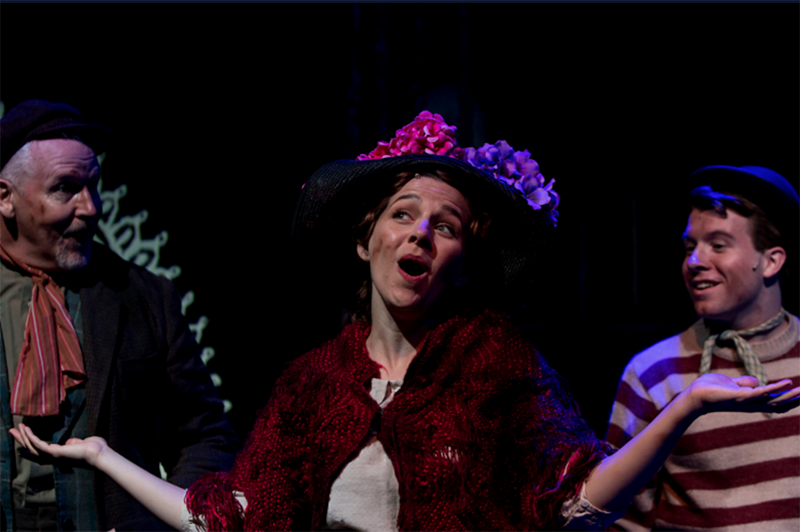
It’s loverly what a fine cast and a clever director and designer can do.
The Encore Musical Theatre Company in Dexter has taken on one of the most challenging and most beloved musical romances and redesigned it for the theater’s intimate confines.
My Fair Lady is celebrating the 60th anniversary of its Broadway debut this year. To mark the occasion Encore has enlisted the talents of noted theatrical director and set designer Tony Walton, who in 1956 was married to the musical’s original Eliza Doolittle, Julie Andrews.
Walton has taken a minimalist approach to a work that has always inspired a certain extravagance. But neither the Encore stage nor budget could accommodate that richness. Walton has been inspired by line drawings for a published script of Bernard Shaw’s Pygmalion, upon which My Fair Lady is based. The drawings by Feliks Topolsky and the original Broadway sets by Oliver Smith were inspiration for rear screen projections that neatly, and compactly, capture the look and feel of the various London locations. The costumes still have a stylized Edwardian charm. The low- and high- class areas are not as starkly defined but are still clearly suggested.
A chamber orchestra visible in the rear stage, a smaller ensemble, and the elimination of the grand ball scene allow Walton and his talented cast to focus on what matter’s most, Shaw’s great characters and wit and Lerner and Loewe’s beautiful music, one of the finest collection of memorable songs in the history of musical theater.
The story is well known. An arrogant upper-class linguist accepts a bet from a fellow language expert to transform a howling lower class flower girl into a “proper lady” by teaching her how to speak like the proper people do. For Shaw this was a play about class differences and the snobbery of those on top. But Alan Jay Lerner’s book transformed it into the unlikely near romance of a beautiful young woman and a grumpy middle-aged confirmed bachelor. Lerner and Frederick Loewe created songs of poignant yearning for position and love and comic songs that capture the spirit of the “undeserving poor.” And it works every time.
The lead performers come with Broadway, film, and television credits that add a bit of glamour, but it’s their talents that really count.
Jessica Grové is an enchanting Eliza, feisty, determined and yet also a bit vulnerable. Grové has a rich, commanding voice that always hits the sweet spot on the show stopping “I Could Have Danced All Night,” but also finds the wistfulness of “Wouldn’t It Be Loverly,” the fierce determination of “Just You Wait,” and the giddy joy of “The Rain In Spain.” The musicals ambiguous ending has always seemed a bit forced, but the sweet, resigned look on Grové’s face makes it a bit more believable.
The object of Eliza’s scorn and growing affection is of course the irascible Henry Higgins, or to the flower girl 'enry 'iggins, a man with a talented ear for accents and no sense at all for the feelings of others, until he’s transformed by his creation. Veteran British actor David Gerroll looks as if he were born to play Higgins. He’s lean, angular with a hawkish, weathered Sherlock Holmes face. He sings in the traditional Rex Harrison speak sing. He bites off Higgins' disdainful opinions of the world with relish and he really comes into his own in his final desperate attempts to keep Eliza without losing himself.
Eliza’s wastrel father with his original ideas on morality, Alfred P. Doolittle, is one of the great comic characters. Keith Allen Kalinowski gives a roaring, rollicking, joyful performance as this always drunk con man. He has two standout musical numbers on “With a Little Bit of Luck” and “Get Me To the Church on Time” and finds every nuance of humor and bits of naughtiness that the songs embody. He is supported by a lively, if confined, ensemble, and particularly by his two rubber faced mates Harry and Jamie, Dan Morrison and Jeff Steinhauer.
The small but important role of Freddy Eynsford-Hill is given a stunning performance by Riley McFarland. Not only does he have a beautiful, piercing tenor voice on “On the Street Where You Live,” but he has a bright, engagingly goofy personality that captures the sweet pain of Freddy’s unrequited love for Eliza.
Dale Dobson is a square jawed rock of propriety as Col. Pickering, the decent contrast to Higgins’ boorishness. Connie Cowper is nicely tart as Higgins' long suffering mother who comforts Eliza.
The musical director Tyler Driskill also finds a way to make a big show work in a small venue. The chamber orchestra does a fine job, and can be particularly expressive in the quieter moments. Sometimes the orchestra is a bit too loud over Higgins’ spoken songs but more often it can’t capture the sweep of a large orchestra on Loewe’s lushly romantic songs. But Driskill and his tiny crew have found a way to provide what’s needed and give full support for the fine singing of the ensemble and the solo performers.
This is solid musical theater, which is what is always expected at Encore. But for the company and for the multi-award winning Walton it has also been an interesting experiment in how to pare down a big, big show and bring out all the intimacy at its core. Walton and Encore have met the challenge.
Hugh Gallagher has written theater and film reviews over a 40-year newspaper career and was most recently managing editor of the Observer & Eccentric Newspapers in suburban Detroit.
My Fair Lady runs through August 28. For ticket information, call the Encore Theatre Box Office at (734) 268-6200 or visit the website at http://www.theencoretheatre.org/tickets.



